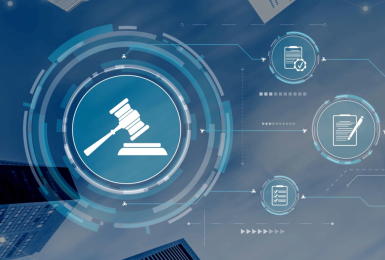The modern digital landscape provides a myriad of exciting opportunities to connect, learn, and profit. Unfortunately, these exciting opportunities are accompanied by several notable hazards. Chief among them? The potential for cyberattacks impacts all types of people and businesses.
These attacks are as costly as they are common, as evidenced by concerning revelations from IBM's 2022 report on the Cost of a Data Breach. This report reveals that breaches are more expensive than ever and, unfortunately, are expected to strike over eight in ten companies.
If there's a silver lining, it's the knowledge that prevention and mitigation strategies have become much more sophisticated in recent years. IBM's report reveals that artificial intelligence and automated tools, in particular, can reduce the time required to mitigate attacks properly and, in turn, reduce their financial impact.
Further improvements will be required as hackers also grow more adept — hence, the need for a new generation of passionate, agile, and highly knowledgeable cybersecurity professionals to address all cyberattack types.
What Is a Cyberattack?
A cyberattack involves any malicious effort to cause harm to individual users, websites, servers, or devices. How this is accomplished can vary considerably between different types of cyberattacks, but it is common for threat actors to gain unauthorized access through infiltration, degradation, or destruction. Once they obtain access, these malicious players may steal sensitive data, defraud users, or, in some situations, bring entire digital systems to a screeching halt.
What Do Cyberattackers Target?
Name an industry, business, website, or individual, and it's almost certain that cyber criminals have tried — or will eventually try — to attack. Data from CFO Magazine Global Business Outlook suggests that over 80 percent of firms have suffered hacks at some point. Smaller organizations are especially vulnerable, with over 85 percent reporting a history of successfully carried out attacks.
Unfortunately, ordinary individuals can also be vulnerable. Malware is an especially common problem, with AV-TEST Institute registering over 450,000 new malicious programs on a daily basis.
Meanwhile, data from the Cybersecurity & Infrastructure Security Agency (CISA) suggests that nearly half of US adults have dealt with their personal information being exposed, while 65 percent of those have received at least one scam offer when spending time online.
How Often Do Cyberattacks Occur?
Cyberattacks occur on a daily, hourly, and even per-minute basis. A commonly cited statistic claims that these attacks take place every 39 seconds. While this particular stat is out of date — it hails from a study conducted in 2007 — it is abundantly clear that cyberattacks happen all the time. The aforementioned data compiled by CISA reveals that over 600,000 hacks occur every day.
These often occur without even the most in-the-know users realizing they've been attacked. We will identify some of today's more insidious types of attacks below — but for now, it's enough to recognize that constant vigilance is essential.
What Are the Most Common Types of Cybersecurity Attacks?
Cyberattacks can take many forms and, unfortunately, new methods are constantly on the rise. Still, a few classic schemes remain the most prominent, and for good reason: they are easy for cybercriminals to carry out and can cause widespread damage in a matter of moments. The most common varieties include:
Malware
Short for "malicious software," malware is a far-reaching term that encompasses many types of attacks. These include:
- Adware
- Spyware
- Rootkits
- Fleeceware
Ransomware
As a specific and alarming form of malware, ransomware adds — as its name indicates — a ransom to the mix. The main goal: prevent targets from accessing systems (or threatening damage to said systems) until they have paid a specified sum of money.
These attacks have become more vicious in recent years, with some cybercriminals successfully carrying out double or triple extortions that prove devastating for targeted businesses or individuals.
Backdoor Trojan
Sometimes referred to as backdoor malware, these attacks hold much in common with other types of Trojans, which are named after the iconic Greek entrance into Troy via a wooden horse. Disguised as ordinary programs, digital Trojans allow malware to enter systems without detection.
With backdoor Trojans, uniquely nefarious malware successfully bypasses the typical authentication process while paving the path to remote access. Attackers are then able to leverage control from afar.
Phishing
As one of today's most common cybercrime tactics, phishing leads victims to assume they have received messages from legitimate sources. In reality, phishing messages originate from malicious parties who hope to gain access to sensitive information by posing as trusted individuals or organizations.
There are several varieties of phishing, such as:
- Bulk phishing. These campaigns involve high volumes of email messages, which are, in most cases, poorly targeted. In these emails, hackers often pose as banks or other financial institutions. These are among the easiest phishing campaigns to pinpoint, and yet, many unsuspecting victims still fall prey to these scams.
- Spear phishing. Typically more targeted than bulk phishing, spear phishing campaigns rely on tailored messages to gain the trust of victims. Many spear phishing campaigns contain specific information that targets assume only trusted individuals would possess.
- Whaling. As a specific form of spear phishing, whaling goes after individuals in positions of power, such as senior executives.
Man-in-the-Middle (MitM) Attack
Similar to phishing in that it centers around deception, man-in-the-middle functions a lot like traditional eavesdropping; the attacker is situated between two users or a user and an application.
From this privileged position, the attacker can intercept or even alter the message. Meanwhile, victims might not immediately realize that they have been targeted. Often, these attacks grant attackers access to sensitive data such as credit card numbers or banking information.
Distributed-Denial-of-Service (DDoS) Attack
Among the most common and damaging attacks, DDoS involves any effort to disable servers by flooding them with illegitimate traffic. Sometimes, these attacks are used as smokescreens to obscure other, even more alarming forms of cybercrime. DDoS is also heavily associated with ransomware, with attackers threatening to render websites inaccessible until victims give in to their demands.
SQL Injection
As a common form of code injection, this attack vector relies on malicious structured query language (SQL) code to drive malicious statements. These attacks have existed for decades, but they remain just as great of a threat today as they were years ago.
To that end, the Open Web Application Security Project (OWASP) highlights SQL injection as one of the top security concerns of our time, and with good reason: SQL injections allow threat actors to gain access to sensitive data and may even make it possible to tamper with entire databases.
Zero-Day Exploit
Unknown security vulnerabilities abound and, all too often, are leveraged before vendors become aware of them. When this happens, it is often referred to as a zero-day exploit — a term that references the unfortunate reality that, at this point, manufacturers have 'zero' time to fix already exploited vulnerabilities. The longer these vulnerabilities exist before manufacturers detect them, the more widespread damage threat actors can do.
DNS Tunneling
Notoriously difficult to detect, Domain Name System (DNS) tunneling attacks transform the otherwise valuable and popular DNS into a powerful and dangerous weapon capable of distributing malware without the need for live network connections. The initial connection required to stage a successful tunneling attack may come by way of adware, spear phishing, or social engineering.
Cross-Site Scripting (XSS) Attack
Yet another alarming form of injection, cross-site scripting (XSS) occurs when malicious scripts make their way into seemingly harmless websites. During these attacks, data enters applications through web requests or other less-than-trustworthy sources. This harmful data can be integrated into dynamic content without the need for validation.
Common subsets from this category include reflected and stored XSS, which are both server-side vulnerabilities. OWASP highlights a third, lesser-known category: Document Object Model (DOM) XSS. Under this uniquely dangerous setup, the malicious party modifies the DOM environment within the victim's browser. The client is then capable of running code without the consent of the targeted user.
Tips to Prevent Different Types of Cyber Attacks
A layered strategy is the gold standard for modern cybersecurity. No single initiative is guaranteed to keep all attackers at bay, but a solid combination of vetted solutions should make infiltration less likely. These suggestions should provide a strong start:
Keep Software Up to Date
Regular software updates provide patches to address known vulnerabilities. In addition to addressing security flaws, these updates may improve general software performance.
Automated updates remove much of the guesswork, but it's still important to be mindful of when updates are needed or available — and to understand the scope of the hazards that necessitate these updates.
Use Strong, Unique Passwords
Password protection remains a common source of weakness, even though most users understand just how important passwords are for preventing brute force attacks. Passwords should never contain personal details or any words or phrases that could easily be guessed. Rather, they should consist of long and random strings of letters, numbers, and special characters.
Avoid using the same password for multiple accounts. No matter how strong it may seem, it can eventually be cracked — and when this happens, several accounts will become vulnerable.
Use Multifactor Authentication
Multifactor authentication (MFA) goes a step beyond the typical password and adds an email or cell phone code to the mix. This may seem like a burden when accustomed to quickly entering passwords, but it can dramatically improve protection. If malicious parties somehow gain access to passwords, chances are they will prove unable to also access time-sensitive codes sent to mobile devices.
Examine Email Addresses
Email remains one of the most common vectors for cyberattacks. Spoofing is a popular and, unfortunately, highly impactful strategy that cybercriminals use to target unsuspecting email recipients.
With these schemes, threat actors anticipate that their targets will click links or download attachments that they might otherwise avoid simply because they assume this content has come from trusted contacts and, therefore, must be safe.
While spoofing attacks can be difficult for even the most discerning of victims to identify, there are a few clues that may reveal malicious intent. Often, the name of the sender will not match the email address in question. Additionally, details within the email may not be consistent with what is known about the sender.
Backup Your Data
In the worst-case scenario, data backups can provide much-needed peace of mind. This can also be a powerful tool for standing up to ransomware attacks, as threats may not seem as urgent if recent backups are available. The ideal approach will include, at minimum, weekly backups — although daily backups are increasingly becoming the gold standard for internet security.
Be Cautious When Clicking Links
Many seemingly savvy internet users succumb to suspicious links if they're disguised cleverly enough. Remember: any link, no matter how legitimate it may seem, could lead to malware or other cybersecurity concerns. This rule applies to links found on social media, trusted websites, and email messages from seemingly legitimate senders.
Importance of Cybersecurity
With so many vulnerabilities plaguing the modern internet, the enduring fight against cybercrime might start to seem hopeless. This is certainly not the case, however. Every year, there are numerous stories of successfully thwarted attacks, not to mention the many preventative measures that prove successful without us ever realizing it.
While threat actors can always be expected to evolve, simply securing a base level of protection can go a long way toward remaining one step ahead of malicious players. As public awareness continues to improve and we continue to dedicate more resources and talent toward these problems, real progress is possible.
Consider a Master’s Degree in Information Security
As cyber risks continue to grow more complicated and urgent, it is increasingly clear that highly skilled cybersecurity professionals will play a crucial role in our economy moving forward. At Champlain College Online, we are determined to do our part by providing targeted training for the cybersecurity experts of tomorrow.
Home to the Senator Patrick Leahy Center for Digital Investigation & Cybersecurity, we have a strong reputation for our cutting-edge work in cybersecurity and forensics education. Our master's in information security program provides the ultimate example of what the field’s most driven professionals and students can accomplish. Reach out today to learn more about this respected graduate program and the exciting opportunities it provides.
You May Also Like
Request Information
Ready to take the next step? Connect with our admissions team to learn more about Champlain College Online today.

Request Information
I acknowledge that, by clicking the "submit" button, I am giving my express written consent to Champlain College and its representatives to contact me about educational opportunities via email, text, or phone, at the phone number above, including my mobile phone, using an automatic dialer, or pre-recorded message. Message and data rates may apply. I understand that my consent is not a requirement for enrollment, and I may withdraw my consent at any time.






